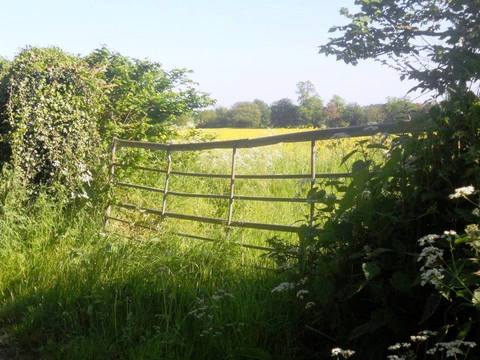
I took my time as I drove along these roads, exploring the homeland of the American colonies' Founding Fathers. From this gentle countryside came the core of the Pilgrims who sailed aboard the Mayflower to arrive at Plymouth Rock on 27th December, 1620.
Babworth's All Saints Church became the focus of religious foment in the first years of the 17th century. It stands at the end of a tree-lined track in a quiet wooded glade. Strolling past lichen-encrusted gravestones lining the path to the church porch, I found it incredible to think that this unpretentious medieval church had been the scene of controversy.
Richard Clyfton, rector here from 1586 to 1604, delivered his quiet, passionate, but revolutionary sermons in the dim interior. As a Puritan, Clyfton believed, along with an increasing number of liberal Elizabethan clergymen, that the fledgling Church of England should shed all Roman Catholic-style ritual and devote its services to pure worship.
I admired the simple altar where Clyfton once preached, and I wondered if his mostly poor, uneducated congregation appreciated their rector's purer style. Did his parishioners return to their farms grumbling about his refusal to wear a surplice, or did he leave them animated, even fearful, over his modern presentations of scripture?
Either way, word of his preaching spread and attracted like-minded Puritans. These newcomers to Clyfton's congregation included William Brewster, eventual author of the Mayflower Compact; and William Bradford, who would serve as Plymouth Plantation's Governor for 35 years.
Today, Babworth's few parishioners take pride in their Pilgrim Father connections. A stunning model of the Mayflower, composed of dried flowers, adorns one of the church's interior walls. Another detailed scale model of the ship, constructed from 14,000 matchsticks, stands near the altar. I asked the current rector, the Reverend Bob Smith, who had the time, patience, and dedication required to build the model. 'A person serving at Her Majesty's pleasure,' he replied with dry humour--meaning that an inmate in the local prison had built it.
Smith's parishioners esteem the church's heritage so highly that they get upset with him if he does not take his readings from the Queen Elizabeth Bible and conduct his sermons in the language of Elizabethan England. I did wish I had had time to return for a Sunday service.
William Brewster travelled 12 miles from Scrooby to attend services at Babworth. A delightful venue for a stroll, the village of Scrooby contains a hotchpotch of housing styles. Neat flower gardens lie adjacent to nearly every home. My own walk along the quiet streets took me past an old mill where flotillas of downy ducklings had taken up summer residence in the still millpond. I ventured across the village green bordered by mature horse chestnut trees, past 17th- and 18th-century farms, and to the convivial village pub, which serves fine ale and wholesome food.
Two of Scrooby's buildings--St. Wilfrid's Church and Scrooby Manor House--enjoy associations with Brewster. As I entered 12th-century St. Wilfrid's by the north gate, a pinfold caught my eye. This rectangular stone enclosure held stray animals impounded by the village pinder (an officer concerned with local animal grazing rights) until the animal's owner paid a fine for the return of his livestock.
St. Wilfrid's, a simple church much renovated over the centuries, houses a display about the village's most famous son. Brewster certainly went to St. Wilfrid's, but from 1600 onwards he incurred fines for erratic attendance. The Church of England made worship compulsory during Elizabeth I's reign, and Brewster's dislike for Conformist services did not excuse him.
Standing in a medieval churchyard in the 21st century, I found 17th-century ecclesiastical contentions intriguing. Intellectual revolution and liberalization marked the age. Elizabeth instituted reforms in the church, but some people wanted to go further and abolish clerical vestments and caps, bowing to the name of Jesus, using the sign of the cross in baptisms, and the church hierarchy of archbishops and bishops. Clergy who agreed with these points became known as Non-Conformists, and those who wanted to separate Church and State were known as Separatists.
When King James, a Catholic, ascended the English throne in 1603, he declared Non-Comformists and Separatists seditious and made participation in Separatist worship services punishable by loss of livelihood, which in 17th-century England meant destitution and imprisonment.
The Conformists denounced Richard Clyfton in 1604. Deprived of his means of making a living, he went to live with Brewster at Scrooby Manor House where they formed their own clandestine congregation, including William Bradford from Austerfield and John Robinson from nearby Sturton-le-Steeple. Many in Robinson's family later sailed on the Mayflower.
Brewster's Manor House looked like nearby Gainsborough Old Hall. Today only a dovecote and an ivy-clad wing dating from 1750 remain. The house, now a private residence, is visible from Railway Road, across the dry fishponds that once formed part of the manorial estate.
William Bradford was baptized a few miles from Scrooby in St. Helena's Church, Austerfield. It's the most architecturally interesting of the three Pilgrim churches. Visitors enter the church through a Norman-Saxon door, its lintel decorated with an ancient and inexplicable horse-headed serpent. Immediately through the door stands the stone, lead-lined baptismal font where Bradford was baptized in the winter of 1589-90. A beautiful stained glass window commemorates the 400th anniversary of this event. The window casts coloured light upon other memorabilia connected with Bradford, including his Governour's flag placed below the church's chancel arch.
The Scrooby Separatists had contact with a similar group in Gainsborough who enjoyed the secret protection of the Hickman family, owners of Gainsborough Old Hall. Crossing the Trent, I drove into Gainsborough. In the 17th century this thriving port town prospered from tariffs levied on the barges that carried goods down the Trent to Hull, and on the carts that paid tolls to cross the bridge. Some of this wealth accrued to the Hickman family.
Gainsborough Old Hall is a 500-year-old manor house, well worth visiting for its Pilgrim connections and many other wonderful historical insights. Colourful heraldic flags decorate its timber-framed Great Hall. Here John Wesley, founder of the Methodist Church, preached, and Richard III and Henry VIII banqueted. What sumptuous feasts they must have been--roast meats, stuffed swan, many sweet confections, toasts with fine ales and wines from a well-provisioned cellar, accompanied by the music of mandolins and minstrels from overhead galleries.
I particularly enjoyed the enormous kitchen where a hierarchy of men prepared and artistically presented the food, from the head chef to the lowly scullers who cleaned the dishes (the origin of the term'scullery maid'; the exhibits explain the roots of many English expressions such as 'curfew,' 'potluck,' and the aromatically disgusting origins of 'wardrobe').
The Hickmans, though powerfully rich, were politically astute enough not to have the Separatists living or meeting in their home. No one knows where they did meet. In 1607 the Gainsborough Congregation, probably with Hickman's financial assistance, fled to religiously tolerant Holland. Shortly afterwards the Scrooby Congregation decided to follow.
Standing by a simple memorial to the Separatists' first flight from persecution and looking along the exposed tidal mud of Scotia Creek, I tried to imagine their fear and determination. They walked here, afraid of being discovered. Secretly they passed over the Lincolnshire Wolds--a range of undulating chalk hills with agricultural vistas of yellow canola and blue flax fields--always scared of arrest and betrayal. Officials had issued an arrest warrant against Brewster. The fugitives skirted Boston town, its location marked by the Boston Stump--the parish church's tower which for centuries served as a navigational aid. Then on the verge of escape, as they boarded the Dutch vessel contracted to take them to Holland, they were arrested, their departure thwarted by the captain's betrayal.
Brewster, Bradford, Clyfton, Robinson, and three others were imprisoned in Boston's Guildhall. I stooped through one of the small, grilled cell doors to enter a space approximately six by eight feet. Given the prison conditions of that age, the men's month of detention here must have been a squalid experience. A spiral staircase leads from the cells up into the oak-panelled Magistrates Court where, contrary to expectations, the prisoners received a lenient hearing. The magistrate sentenced them to appear at the Assize Courts in Lincoln, where I found, ironically enough, an interesting Magna Carta exhibit.
In the early 17th century the bustling port of Boston supported a growing population of Separatist sympathizers. The most notable of these, Bishop John Cotton, eventually became head vicar of Boston, Massachusetts. Stained glass in the parish church of St. Botolph's commemorates his departure for the New World. Visitors should not leave the area without first going up the Boston Stump. The dizzying ascent leads to views overlooking this ancient market town and into the neighbouring countryside liberally studded with windmills.
After their release, the Pilgrims, deprived of land, homes, and livelihood, decided once more to flee to Holland. In 1608 they contracted another Dutch ship to transport them. The men walked to the departure point while the women travelled by barge down the River Trent. At the rendezvous, disaster struck again. After most of the men had boarded, they saw a group of armed men coming to arrest them. The Dutch captain, fearing arrest, set sail, leaving the women and children behind to face arrest alone. The authorities took them into custody, but, realizing they had little to gain by holding harmless women and children, they eventually granted them permission to emigrate.
The Separatists' exact point of departure is unknown. William Brewster's diaries simply refer to a tidal creek somewhere on the coast between Grimsby and Hull. The small town of Killingholme, near Immingham, claimed the Pilgrims fled from Killingholme Creek, which no longer exists. It was drained a couple of decades ago, when a petrol company built a refinery here.
A memorial stone stands in Immingham, carved from rock brought from Plymouth, Massachusetts. After I had visited the simple stone attesting to the Pilgrim's tenacity, I drove to a lookout near Alkborough. I sat there and gazed at the fertile flatlands of the Trent Valley below me and, appropriately, looked to the west, the direction of the Pilgrims' final destination.
* Originally published in 2017.
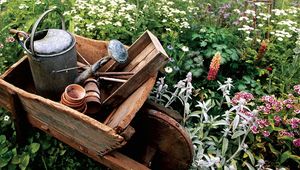
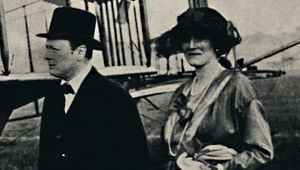

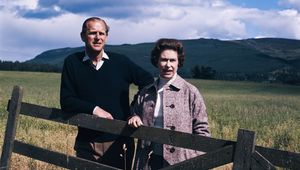
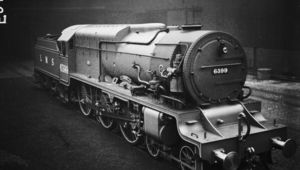
Comments